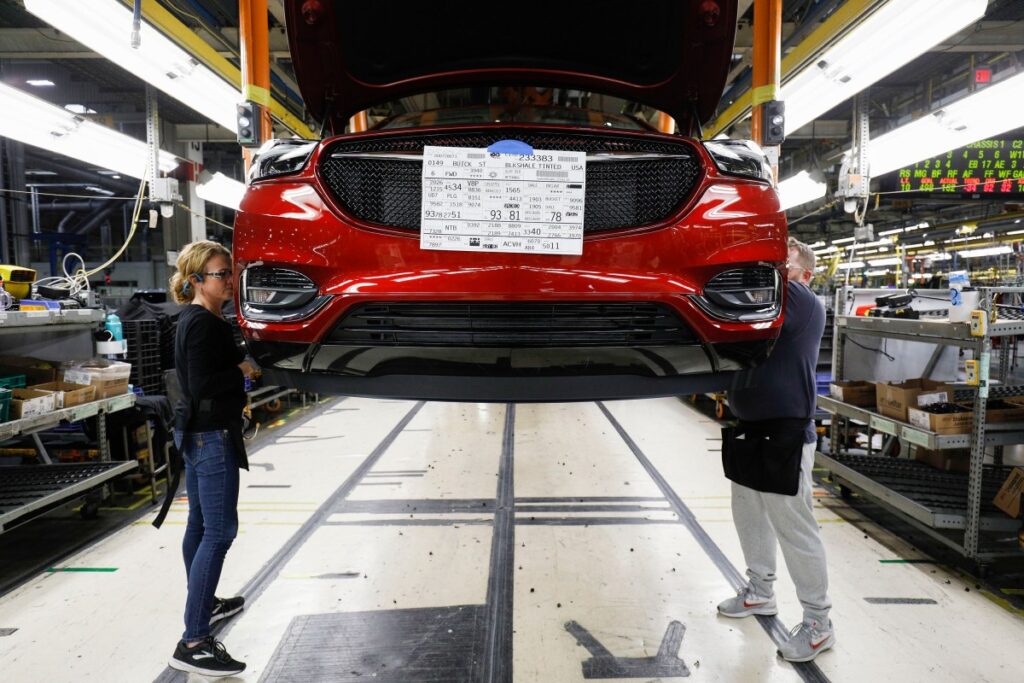[ad_1]
General Motors is selling its stake in the nearly completed Ultium Cells battery cell plant in Lansing, Michigan to its joint venture partner LG Energy Solution. GM’s step back from the factory comes amid weakening electric vehicle demand and the potential rollback of Biden administration incentives to produce clean energy domestically.
GM and LGES initially teamed up in 2019 to form a joint venture to mass produce battery cells for electric vehicles. Since then, the two have poured billions into three factories: The Lansing facility that LGES is acquiring; a Spring Hill, Tennessee, facility that started production in 2024; and a Lordstown, Ohio, factory that has been producing battery cells since 2022. The cells produced at the Ohio and Tennessee plants power vehicles like the Chevrolet Silverado EV, GMC Sierra EV, Cadillac LYRIQ, Chevrolet Blazer EV and Chevrolet Equinox EV, as well as the GMC HUMMER EV pickup and SUV.
In October, GM dropped the Ultium battery brand name as part of a move to embrace new types of cells and chemistries, like lithium iron phosphate (LFP) batteries.
GM helped set the stage for a movement among automakers and battery manufacturers to onshore battery production after the COVID-19 pandemic. President Joe Biden’s Inflation Reduction Act, which he signed in August 2022, included incentives geared towards helping the U.S. reduce reliance on China for batteries, and served as a catalyst for a wave of new battery projects.
Aside from LGES, GM also announced a JV with Samsung SDI to build a new battery plant in the United States in April 2023, and is working with a handful of startups dedicated to fostering new battery technology.
The news of GM’s nonbinding agreement with LGES comes a few months after reports that GM and LGES were slowing the buildout of the Lansing plant, which was expected to start production in 2025. LGES did not respond in time to TechCrunch to confirm if that timeline is still accurate, nor whether the company still expects the plant’s capacity to reach 45 GWh at peak production.
Neither company shared the acquisition price, but a spokesperson from GM said the company expects to recoup its initial investment. In a statement, GM said it expects the remaining two plants will be sufficient to meet current demand.
GM didn’t share how much LGES is buying the factory for, but a spokesperson for the company said GM expects to recoup its initial investment. GM and LGES initially announced a $2.6 billion investment into the plant, but it’s not clear how much each company has spent.
GM also announced Monday that it would work with LGES to jointly develop prismatic battery cells. Levy declined to share whether those cells would be produced at one of the remaining joint venture sites, or if they’ll be manufactured in a yet-to-be-announced facility.
At the Ohio and Tennessee plants, GM and LGES have focused on making pouch cells, which have the benefit of being more affordable and flexible in shape. Prismatic cells, while heavier and more expensive, have a higher energy density, longer life cycle, and better heat management.
[ad_2]
Source link

